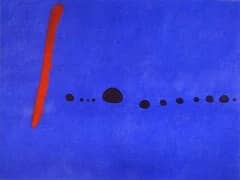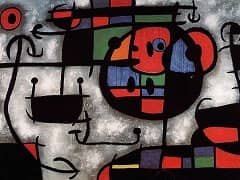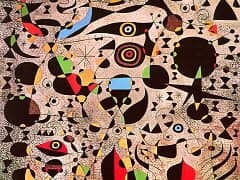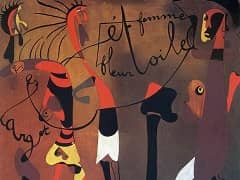The Kiss by Joan Miro
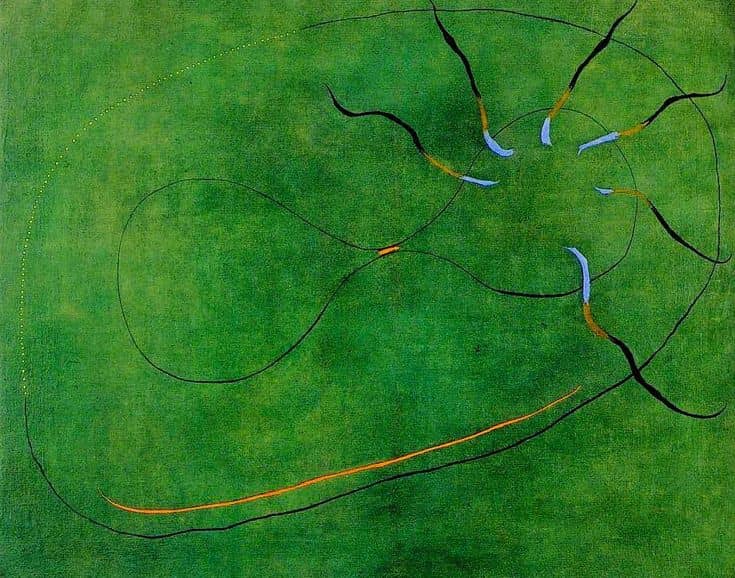
Joan Miro's Dada period was determined not by the nihilism of so many Dada artists, but by a positive belief in the healing properties of art.
His association with the Surrealist group in Paris from the 1920s onwards provided Miro with the opportunity to develop his experiments in primordial forms. Unlike the famous Kiss Painting created by symbolism painter Gustav Klimt, in Miro's Kiss painting, he uses biomorphic shapes, set within an empty spatial context, often transforming humans into animals or other objects. Their appearance was frequently amoeba-like and cellular, or hinting at a human part of the anatomy such as a navel or eye. For Miro, these shapes represented a model of primordial being in a natural world that was in a constant state of flux.


